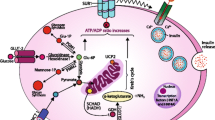Abstract
Hyperinsulinism of infancy (HI) is a cause of persistent and recurrent hypoglycaemia in infancy and childhood, which if untreated can cause significant brain damage and mental retardation. The biochemical hallmark of hyperinsulinism is hypofattyacidaemic, hypoketotic hyperinsulinaemic hypoglycaemia. Diazoxide is the first line medical treatment for persistent HI. Diazoxide is an agonist of the pancreatic β-cell KATP channel and inhibits insulin secretion. Children who develop recurrent hypoglycaemia while on therapy with diazoxide are thought to be unresponsive to this medication or non compliant with medical therapy. We report a novel observation of “ketotic” hypoglycaemia in two children on diazoxide therapy for persistent HI. Detailed assessment of the intermediary metabolites and hormones at the time of the hypoglycaemia showed appropriate insulin suppression with appropriate increases in the serum levels of non-esterified fatty acids and ketone bodies as well as an intact counter-regulatory hormone response. The precise mechanism of the hypoglycaemia is unclear. Conclusion:These cases illustrate that recurrent hypoglycaemia while on diazoxide therapy may be due to other mechanisms and does not imply diazoxide unresponsiveness or non-compliance.
Similar content being viewed by others
Abbreviations
- HI :
-
hyperinsulinism of infancy
References
Alemzadeh R, Slonim AE, Zdanowicz MM, Maturo J (1993) Modification of insulin resistance by diazoxide in obese Zucker rats. Endocrinology 133: 705–712
Alemzadeh R, Jacobs W, Pitukcheewanont P (1996) Antiobesity effect of diazoxide in obese Zucker rats. Metabolism 45: 334–341
Alemzadeh R, Holshouser S, Massey P, Kootz J (2002) Chronic suppression of insulin by diazoxide alters the activities of key enzymes regulating hepatic gluconeogenesis in Zucker rats. Eur J Endocriol 146: 871–879
Aynsley-Green A, Hussain K, Hall J, Saudubray JM, Nihoul-Fékété C, De Lonlay-Debeney P, Brunelle F, Otonkoski T, Thornton P, Lindley JK (2000) The practical management of hyperinsulinism in Infancy. Arch Dis Child Fetal Neonatal Ed 82: F98–F107
Dahlquist G, Gentz J, Hagenfeldt L, Larsson A, Low H, Persson B, Zetterstrom R (1979) Ketotic hypoglycaemia of childhood- a clinical trial of several unifying etiological hypothesis. Acta Paediatr Scand 68: 649–656
Daly LP, Osterhoudt KC, Weinzimer SA (2003) Presenting features of idiopathic ketotic hypoglycaemia. J Emerg Med 25: 39–43
Dunne MJ, Cosgrove KE, Shepherd RM, Aynsley-Green A, Lindley KJ (2004) Hyperinsulinism in infancy: from basic science to clinical disease. Physiol Rev 84: 239–275
Hussain K, Aynsley-Green A (2000) Management of hyperinsulinism in infancy and childhood. Ann Med : 544–551
Hussain K, Hindmarsh P, Aynsley-Green A (2003) Spontaneous hypoglycaemia in childhood is accompanied by paradoxical serum cortisol and growth hormone counter-regulatory hormonal responses. J Clin Endocrinol Metab 88: 3715–3723
Kane C, Shepherd RM, Squires PE, Johnson PRV, James RFL, Aynsley-Green A, Lindley KJ, Dunne MJ (1996) Loss of functional KATP channels in β-cells causes persistent hyperinsulinaemic hypoglycaemia of infancy. Nat Med 2: 1344–1347
Leonard JV, Middleton B, Seakins JW (1987) Acetoacetyl CoA thiolase deficiency presenting as ketotic hypoglycemia. Pediatr Res 21: 211–213
Meissner T, Mayatepak E (2002) Clinical and genetic heterogeneity in congenital hyperinsulinism. Eur J Pediatr 161: 6–20
Pagliara AS, Kari IE, De Vivo DC, Feigin RD, Kipnis DM (1972) Hypoalaninemia: a concomitant of ketotic hypoglycemia. J Clin Invest 51: 1440–1449
Rutledge SL, Atchison J, Bosshard NU, Steinmann B (2001) Case report: liver glycogen synthase deficiency—a cause of ketotic hypoglycemia. Pediatrics 108: 495–497
Shepherd RM, Cosgrove KE, O’Brien RE, Barnes RD, Ammala C, Dunne MJ (2000) Hyperinsulinism of infancy: towards an understanding of unregulated insulin secretion. European Network for Research into Hyperinsulinism in Infancy. Arch Dis Child Fetal Neonatal Ed 82: F87–F97
Standridge M, Alemzadeh R, Zemel M, Koontz J, Moustaid-Moussa N (2000) Diazoxide down-regulates leptin and lipid metabolizing enzymes in adipose tissue of Zucker rats. FASEB J 14: 455–460
Acknowledgements
Research at the Institute of Child Health and Great Ormond Street Hospital for Children NHS Trust benefits from R and D funding received from the NHS Executive.
Author information
Authors and Affiliations
Corresponding author
Rights and permissions
About this article
Cite this article
Hussain, K. Ketotic hypoglycaemia in children with diazoxide responsive hyperinsulinism of infancy. Eur J Pediatr 164, 387–390 (2005). https://doi.org/10.1007/s00431-005-1654-7
Received:
Accepted:
Published:
Issue Date:
DOI: https://doi.org/10.1007/s00431-005-1654-7




